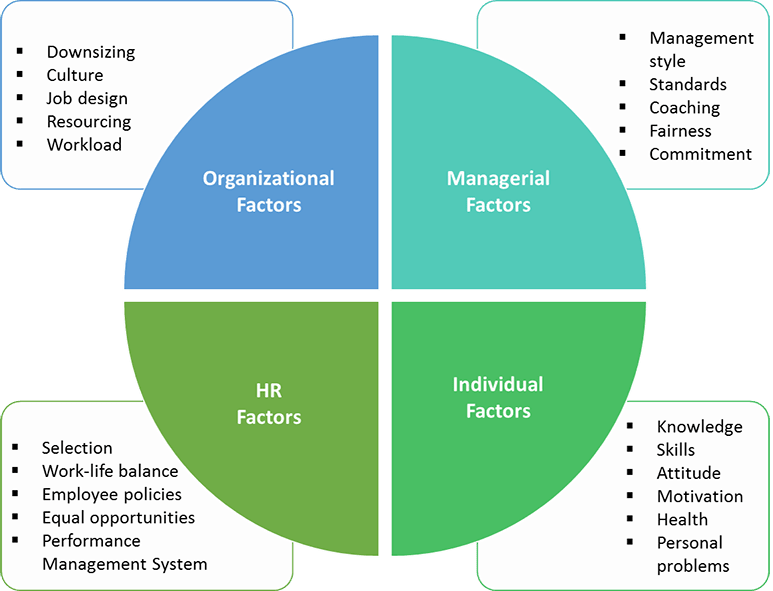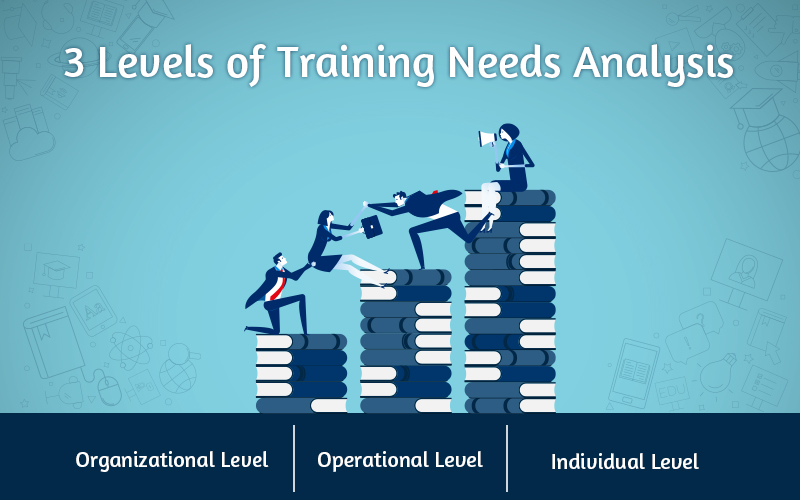Can Training Tackle Negative Performance at the Workplace?

The lifeline of any organization is its employees. Employees armed with efficient skillsets and the right attitude spell success for your organization. But then the fact remains that all employees aren’t alike. According to a Gallup Survey, almost 70% of the American workforce is not working to its fullest potential. This points to the fact that that there are factors that affect employee performance.
Negative Performance – What can be handled through training
There are many factors that affect the performance of employees, and they can be classified into categories such as organizational, managerial, HR, and individual. Some of the individual factors that can be addressed through training are:
- Lack of knowledge
- Lack of skills
- Problems with attitude (training can address this problem partially)
Factors that Affect Employee Performance
There are many factors that can affect employee performance and these factors can be divided into four categories.

Source: Adapted from IES, 2004
Of all these factors the ones that are more difficult to handle are the ones related to individuals or people. Deming was right when he said that “People can face almost any problem except the problem of people….Faced with problems of people, management will go into a state of paralysis”.
Negative performance or poor performance arises when the ideal performance expected from employees does not match their actual performance. Can training help tackle this problem of poor performance? To a certain extent, yes but not always.
Can Training Help?
Can training offer a solution to an individual’s negative performance at the workplace? Take a look at the table below.
|
Factors Contributing to Negative Performance |
Can Training Offer a Solution? |
| Lack of knowledge
Employee is unaware of the company culture, processes, services, or product knowledge |
Yes – classroom or online training |
| Lack of skills
Has the knowledge but does not know how to apply the skills |
Yes – hands on practice or on-the-job training |
| Problems with attitude
A negative attitude stems from negative emotions such as jealousy, anger, mistrust, greed, etc. This affects not just the individual but other employees too. |
Partly. Training can, to a certain extent, address behavioral problems which in turn can change attitude. Other solutions are counseling or manager feedback. |
| Lack of motivation
May or may not have the knowledge and skills but is not motivated enough to work. This is often a result of external factors. |
No. Coaching or talking to a mentor might help. |
| Poor health | No. Training can only create awareness on health and preventive measures but cannot offer a solution. |
| Personal problems | No. Employee assistance programs might help. |
How Does Training Help Address Negative Performance?
Here’s how training can address negative performance factors such as lack of knowledge, lack of skills, and problems with attitude.
1. Lack of Knowledge
There are three situations where you might need to design training to address lack of knowledge.
- When the employee is new
- When the process, product, or service is new
- When there is a change in the process or product
For the first two situations, you might want to blend classroom as well as online training, whereas for the third, eLearning can offer an excellent solution.
2. Lack of Skills
According to McKinsey, almost 40% of American employers say that they cannot find people with the required skills, even at entry-level jobs. Be it new hires or experienced professionals who need to upgrade their skill sets, organizations can tackle this problem with strategic training programs – both instructor-led as well as online training.
Before you go ahead with your training initiative, perform a skill gap analysis to assess the current and expected skill levels of employees. Try answering this question – Do your employees have the required skills to perform their job well?
If the answer is no, then a full-fledged training program is required. On-the-job training is something that cannot be skipped when you want to tackle lack of skills.
But if they already have the required skills and have forgotten it, microlearning is a good strategy for reinforcement of learning.
3. Problems with Attitude
One problem that every manager faces is dealing with employees who have the wrong attitude. Even if the employee listens to your feedback, he/she is either going to be defensive or simply clueless about how to change their attitude.
If you want to help someone change their attitude, observe their behavior. After you identify the problems caused due to the employees’ bad attitude, let them know how their behavior affects work and their relationship with others at the workplace. Traditional training may not do much to bring a change in behavior. It requires:
- An intrinsic desire to change (motivation can help)
- Continuous reinforcement (conscious effort to alter the behavior)
- Constant feedback (by a mentor or co-worker)
We cannot change attitude directly, but we can certainly coach employees to change their behavior, and that in turn brings a positive change in attitude. Behavior change can happen only through an ongoing process that:
- Imparts behavioral training
- Provides ample opportunities to demonstrate the behavior
- Constantly reinforces the behavior (requires monitoring and mentoring)
So, it would be right to say that training can provide the answer to a few of the factors that cause negative performance. You need to have an understanding of what is a training issue and what is not.
| Thumb rule to follow: Do not try to solve every performance problem through training. |
Use training judiciously and make a wise investment. To help you further on making the right decision, make use of our eBook on E-learning to Achieve Business Goals. If you would like to share how you tackled negative performance factors at your workplace, please use the Comments section. We’d love to hear from you.






